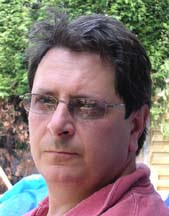
American Wigeon
Following a request placed on BirdForum I was pleased to be able to get a morning's birding in whilst on my second business trip of the year to the Dallas / Fort Worth Metroplex.
Dallas is not helpful to those who attempt to bird on foot as I soon aroused suspicion with local security when I went for a morning walk before sunrise (07:30am). I was reminded of 9/11, clearly standing out from the rest because I had chosen to walk rather than use a car.
Anyway, two very helpful birders from the local Audubon society had agreed to take me out to somewhere more rural where some birding could be had and I am indebted to Laura and Susan who collected me from my hotel and showed me around Arlington.
The Trinity River water treatment pools covered a vast area and held many birds. the morning had been cold and the mists hung over the river and the first frost was still remaining as the sun warmed and threatened a very nice day, around 65 degrees fahrenheit.
Double-crested Cormorants flew over and an Eastern Phoebe wagged it's tail close to the entrance track. Susan drove her SUV around the perimiter of many of the open water pools which could be viewed with ease. Wildfowl numbers were good with Northern Shoveler and Green-winged Teal most common. Blue-winged Teal, Mallard, Gadwall, Northern Pintail and a few Pied-billed Grebe, Redhead, Ruddy Duck and Bufflehead were picked up amongst the hundreds of American Coot. A few Shorebirds included Least Sandpipers, Wilson's Snipe, Long-billed Dowitchers, Kildeer and a single Greater Yellowlegs.
I was keen to scrutinise the throngs of Red-winged Blackbirds and Grackles that were moving around as there were likely to be other Blackbird species to be seen. Laura picked up two Rusty Blackbirds in a small shrub alongside two Great-tailed Grackles.
My first Marsh Wren was also picked up singing by Laura and showed well for the camera whilst sparrow species were narrowed to White-crowned and Savannah. I had already managed to see White-throated, White-crowned, Chipping, Field and Lincoln's around the hotel & office area of Irving earlier in the week.
A single American Kestrel and Loggerhead Shrike patrolled the pools and at least half a dozen Eastern Meadowlarks were seen in the grass fields, a declining species in the region. as we were about to head back, Laura picked up a single White-faced Ibis, a species very similar to our Glossy Ibis seen back home.
From here Susan drove to an adjacent refuge / park close to the Trinity River which provided more woodland habitat. the birds were very active and a small flock of passerines included Carolina Chickadees, Tufted Titmouse, Ruby & Golden-crowned Kinglets, Orange-crowned and Yellow-rumped Warblers along with my first Blue-headed Vireo. Northern Flicker and Brown Creeper played hide-and-seek on a dead tree and a Carolina Wren replayed it's evocative song.
A further walk along the trail around the mature woodlands also provided both Red-bellied Woodpecker and three Yellow-bellied Sapsuckers. En-route back to my hotel in Irving, Susan dropped in to a residential site where Inca Dove were often seen but no-show today. Back to my hotel for 1pm ready for the journey back to the airport and my flight to Heathrow. A big thank-you to Laura and Susan for allowing my trip to include some Texas birding rather than be all-work and no-play.



















































